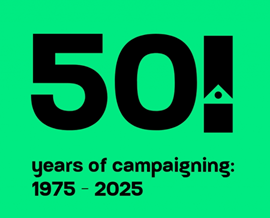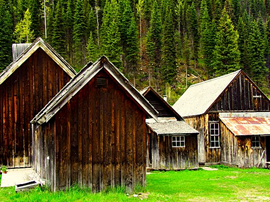Types of fuel
Contents |
[edit] Introduction
Fuels are materials that react with other substances to release heat by way of chemical or nuclear energy:
- Substances that react with other proximate substances to release energy, through the process of combustion, are known as chemical fuels. These are divided both by their physical properties (as a solid, liquid, or gas), and by how they occur (as a primary or natural fuel, or as a secondary or artificial fuel).
- Substances that can release nuclear energy by fission or fusion, are known as nuclear fuels.
Humans first used wood as a fuel for combustion nearly 2 million years ago. The most common fuel sources today are hydrocarbons.
[edit] Solid fuel
Solid materials can be used as fuel to burn and release energy through combustion, which provides heat and light. The most common examples of solid fuels are:
- Wood: Includes firewood, charcoal, woodchips, pellets, sawdust, and so on.
- Charcoal: Produced by heating wood in the absence of oxygen.
- Biomass: Natural plant materials, such as wheat, straw and other fibrous material.
- Peat: Organic matter and decayed vegetation that can be burned when dry.
- Coal: Combustible sedimentary rock.
- Coke: High-carbon material derived from coal.
- Waste: Everyday waste can be converted to a fuel source as long as it does not contain toxic materials.
NB on 1 May 2021, restrictions were introduced on the sale of coal and wet wood as a domestic fuel in the UK. Ref https://www.gov.uk/government/news/restrictions-on-sale-of-coal-and-wet-wood-for-home-burning-begin
[edit] Liquid fuel
Liquids can be used to create mechanical energy, although it is the fumes rather than the fluid of liquid fuels that is flammable. Fossil fuels account for the majority of liquid fuels.
[edit] Petroleums
The most common type of liquid fuel is petroleum, formed from dead plants and animals. Examples of petroleum include:
- Gasoline/petrol: Produced by removing crude oil from petroleum and distilling it in refineries.
- Diesel: A mixture of aliphatic hydrocarbons extracted from petroleum, and processed to reduce the sulphur level.
- Kerosene: Extracted from petroleum.
[edit] Natural gas and liquefied petroleum gas
Natural gas can be compressed to a liquid and is much 'cleaner' than other hydrocarbon fuels. However, to maintain the fuel in a liquid state it requires a constant high pressure.
Liquefied petroleum gas (LPG) is a mixture of propane and butane, and is more easily compressed than natural gas.
[edit] Biodiesel
This is a diesel fuel based on vegetable oil or animal fat, although it yields around 10% less energy than conventional diesel.
[edit] Alcohols
The most common types of alcohol fuels are:
- Methanol: Produced from methane, methanol is the lightest and simplest form of alcohol.
- Ethanol: Most commonly found in drinks, but can be combined with gasoline for use as a fuel.
- Butanol: Usually produced by fermenting biomass using bacteria, butanol has a high energy content.
[edit] Hydrogen
Liquefied hydrogen is commonly used as liquid rocket fuel. Large volumes of hydrogen are required for successful combustion.
[edit] Synfuels
‘Hydrocarbon liquid fuels produced synthesising hydrogen from water, carbon dioxide and electricity. They can be zero-carbon if the electricity input is zero-carbon and the CO2 from direct air capture.' ref Making Mission Possible - Delivering A Net-Zero Economy, published by the Energy Transitions Commission (ETC) in September 2020.
[edit] Gaseous fuel
Gaseous fuels are distributed through pipes from point of origin to point of use, although some are liquefied for storage. Odorisers are often added to fuel gases so that they can be detected, since an undetected build up of gas can lead to an explosion.
Natural gas (composed mainly of methane) is the most commonly used type, but there are numerous manufactured fuel gases, such as:
- Coal gas: Derived from coal.
- Water gas: A mixture of carbon monoxide and hydrogen produced from synthetic gas.
- Syngas: Synthetic gas consisting of hydrogen, carbon monoxide, and often carbon dioxide.
- Biogas: A mixture of gases derived from organic matter breaking down in the absence of oxygen.
- Blast furnace gas: Derived from the manufacture of metallic iron in blast furnaces.
[edit] Calorific values of fuels
The calorific value of a fuel is the total energy released as heat when the substance undergoes combustion. In 2015, the Department for Business, Energy and Industrial Strategy published updated data on the average calorific values of fuels.
| FUEL | GJ PER TONNE (NET) | GJ PER TONNE (GROSS) |
| Coal | 25.7 | 27 |
| Coke | 29.8 | 29.8 |
| Wood (domestic) | 14.7 | 16.3 |
| Wood (industrial) | 19 | 20.3 |
| Biodiesel | 37.2 | 38.7 |
| Bioethanol | 26.8 | 29.7 |
| Crude oil | 43.4 | 45.7 |
| Petroleum products | 43.9 | 46.2 |
| Ethane | 46.6 | 50.7 |
| Butane and propane (LPG) | 46 | 49.3 |
(For the full list see Gov.uk.)
See also: Heating fuel.
[edit] Related articles on Designing Buildings
- Biogas.
- Biomass.
- Coal.
- Electricity.
- Energy.
- Energy consumption.
- Energy price crisis: ECA calls for energy levy reform.
- Energy storage.
- Ethanol.
- Fossil fuel.
- Fuel cell.
- Fuel mix disclosure.
- Heating fuel.
- Hydroelectricity.
- Hydrogen.
- Liquefied petroleum gas (LPG).
- Mains gas.
- Microgeneration.
- Natural gas.
- Oil.
- Power generation.
- Red diesel.
- Refinery fuels.
- Renewable energy.
- Shale gas.
- Types of fuel cells.
- Woodfuel.
- Wood pellet mill basics.
IHBC NewsBlog
IHBC Context 183 Wellbeing and Heritage published
The issue explores issues at the intersection of heritage and wellbeing.
SAVE celebrates 50 years of campaigning 1975-2025
SAVE Britain’s Heritage has announced events across the country to celebrate bringing new life to remarkable buildings.
IHBC Annual School 2025 - Shrewsbury 12-14 June
Themed Heritage in Context – Value: Plan: Change, join in-person or online.
200th Anniversary Celebration of the Modern Railway Planned
The Stockton & Darlington Railway opened on September 27, 1825.
Competence Framework Launched for Sustainability in the Built Environment
The Construction Industry Council (CIC) and the Edge have jointly published the framework.
Historic England Launches Wellbeing Strategy for Heritage
Whether through visiting, volunteering, learning or creative practice, engaging with heritage can strengthen confidence, resilience, hope and social connections.
National Trust for Canada’s Review of 2024
Great Saves & Worst Losses Highlighted
IHBC's SelfStarter Website Undergoes Refresh
New updates and resources for emerging conservation professionals.
‘Behind the Scenes’ podcast on St. Pauls Cathedral Published
Experience the inside track on one of the world’s best known places of worship and visitor attractions.
National Audit Office (NAO) says Government building maintenance backlog is at least £49 billion
The public spending watchdog will need to consider the best way to manage its assets to bring property condition to a satisfactory level.
















